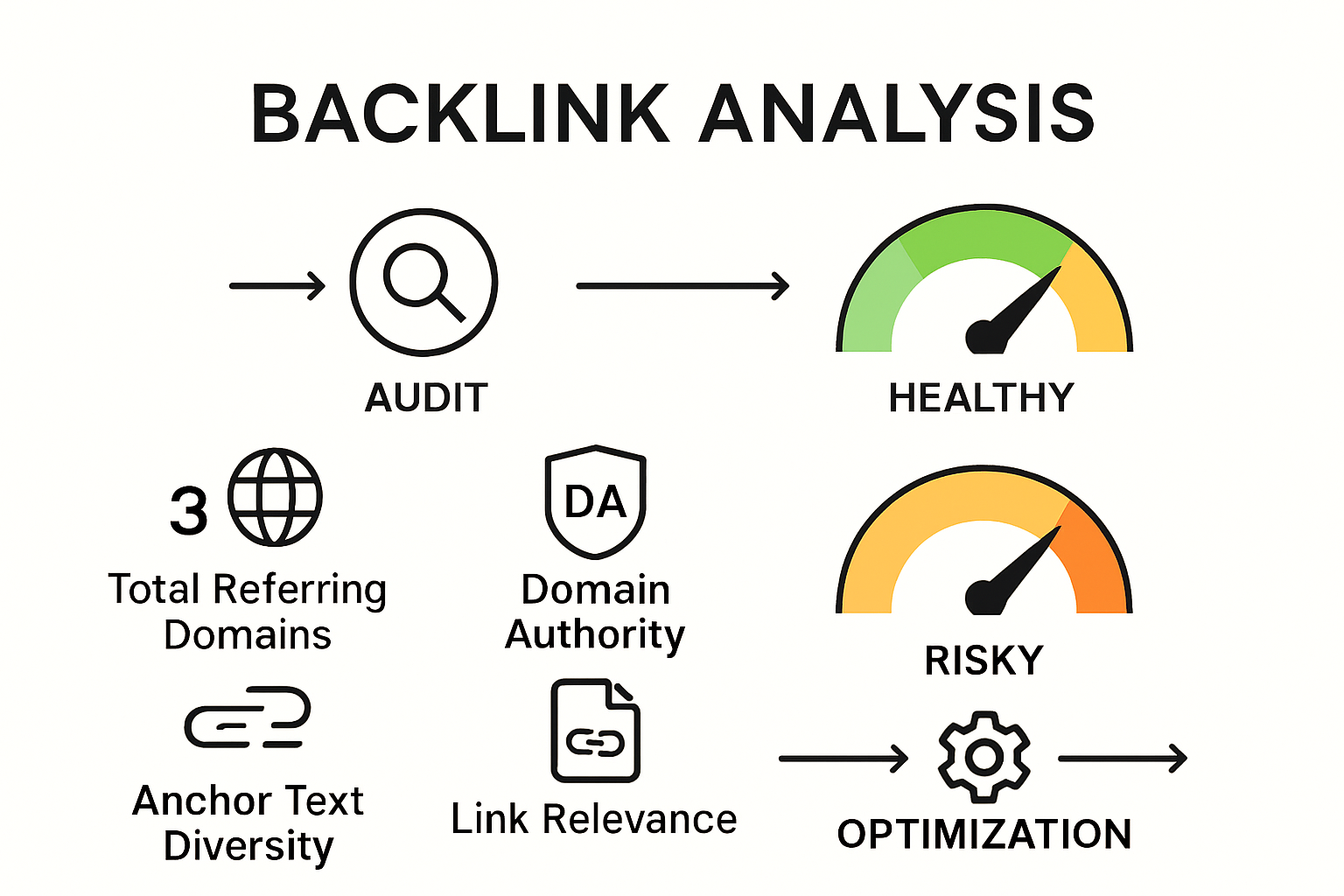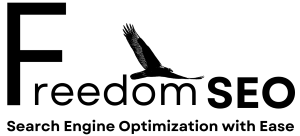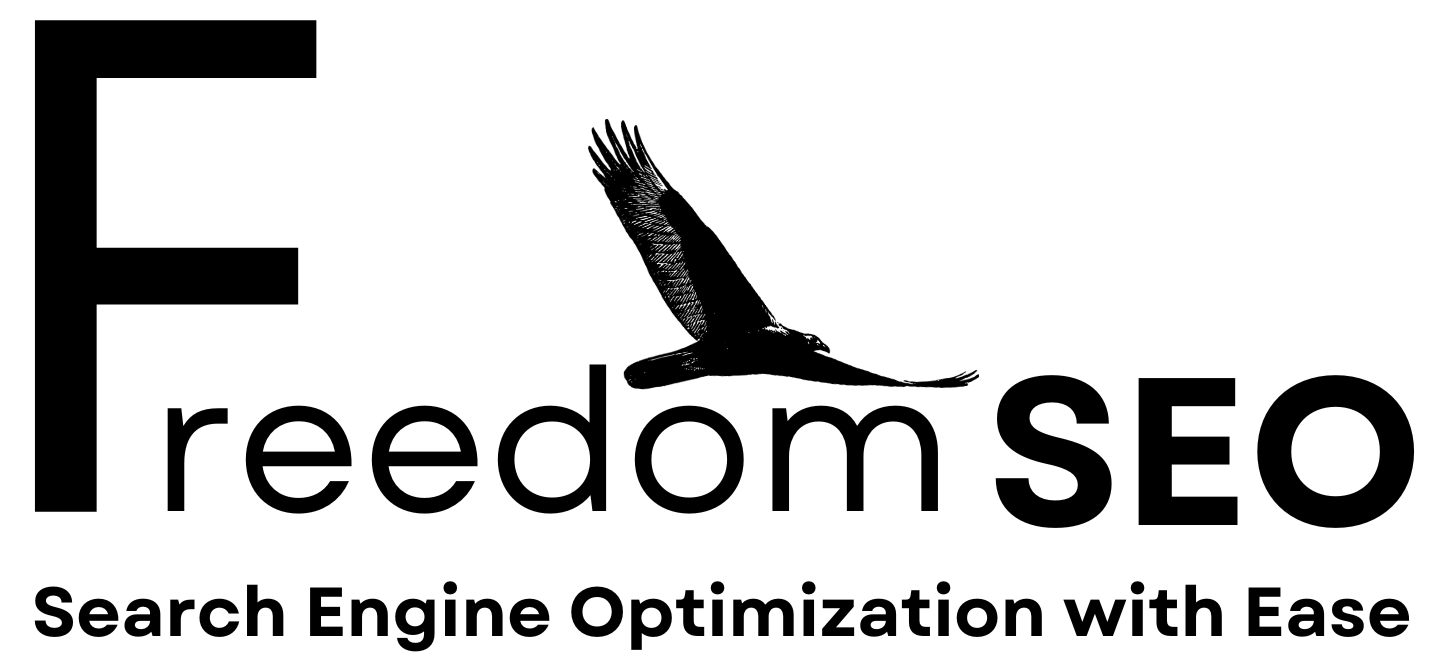How to Build Backlinks: Boost Your SEO in 2025
Building backlinks can feel like searching for a needle in a haystack. Everyone says you need links for better rankings and more visibility. But only a success rate of 10-15 percent in outreach efforts is considered excellent . Most people shoot for hundreds of links and end up with little to show for it. A sharper focus on audience and metrics changes the whole game.

Table of Contents
Quick Summary
| Key Point | Explanation |
|---|---|
| 1. Identify Your Audience Clearly | Understanding your audience’s behaviors and preferences is crucial for crafting effective backlink strategies. |
| 2. Set Specific Backlink Goals | Define measurable objectives like increasing domain authority and generating high-quality referrals for better focus. |
| 3. Conduct Thorough Competitor Research | Analyze competitor backlinks to identify high-quality linking opportunities and enhance your own strategy. |
| 4. Create High-Quality, Link-Worthy Content | Develop in-depth, valuable resources that genuinely benefit your audience and attract backlinks naturally. |
| 5. Personalize Outreach Efforts | Tailor your communication to website owners, showcasing genuine engagement to increase response rates and link acquisition. |
Step 1: Identify Your Target Audience and Goals
Successful backlink strategies start with precise audience targeting and strategic goal setting. Understanding who you want to reach and what you aim to achieve forms the critical foundation of your link-building approach.
Begin by developing a comprehensive profile of your ideal audience. This means going beyond basic demographics and diving deep into their online behaviours, interests, and digital consumption patterns. Consider the specific industries, professional roles, and geographic regions most relevant to your content. For Canadian businesses, this might mean focusing on regional professional networks, local industry forums, or sector-specific online communities.
Research from the University of Nevada, Las Vegas underscores that audience analysis is fundamental to effective digital communication strategies. Your goal is to map out where your potential linkers congregate online and understand their content preferences.
Define clear, measurable objectives for your backlink campaign. These goals should be specific and aligned with your broader digital marketing strategy. Are you seeking to improve domain authority, increase referral traffic, enhance search engine rankings, or establish thought leadership in your industry? Each objective will influence your link-building tactics.
Key objectives might include:
- Securing backlinks from authoritative websites in your niche
- Increasing domain rating by 10-15 points within six months
- Generating a minimum of 50 high-quality referring domains
Utilize tools like Google Analytics , SEMrush , or Ahrefs to track audience insights and measure progress toward these goals. These platforms provide detailed analytics about your website’s current performance, helping you benchmark and refine your strategy.
Remember that audience targeting is not a one-time activity but an ongoing process of refinement. Regularly review your audience profile, assess the performance of your backlink efforts, and be prepared to adjust your approach based on real-world data and emerging trends in your industry.
Successful link building starts with knowing exactly who you’re trying to reach and having crystal-clear objectives that guide your strategic efforts.
The following table provides an at-a-glance overview of each step in the backlink-building process, with concise descriptions and key outcomes for every stage.
| Step | Description | Key Outcome |
|---|---|---|
| 1. Identify Audience & Goals | Define ideal audience and set specific, measurable objectives | Strategic targeting and clear direction |
| 2. Research Backlink Opportunities | Analyze competitors, find relevant, authoritative sites | Qualified list of targeted backlink prospects |
| 3. Develop High-Quality Content | Create unique, valuable, and engaging resources | Link-worthy assets that attract natural backlinks |
| 4. Outreach to Website Owners & Influencers | Personalize communication and build relationships | Secured backlinks and new professional connections |
| 5. Monitor & Analyze Backlink Profile | Track performance, disavow toxic links, refine tactics | Ongoing improvement and sustained SEO growth |
Step 2: Research Potential Backlink Opportunities
Researching potential backlink opportunities transforms your SEO strategy from guesswork into a targeted, systematic approach. This critical step involves identifying high-quality websites that can provide valuable links to your digital content, ultimately boosting your search engine rankings and online visibility.
Start by conducting a comprehensive competitive analysis using advanced SEO tools like Ahrefs , SEMrush , or Moz . These platforms allow you to examine the backlink profiles of top-performing websites in your industry. Look closely at the domains linking to your competitors, paying special attention to websites that consistently link to multiple players in your sector.
Learn more about strategic link building for Canadian businesses requires understanding the nuanced landscape of digital authority. The National Academies of Sciences, Engineering, and Medicine emphasize the importance of evaluating website credibility and domain authority when selecting potential link sources.
Beyond competitor analysis, explore industry-specific directories, professional associations, and authoritative blogs related to your niche. For Canadian businesses, this might include local chamber of commerce websites, industry-specific professional networks, and regional business publications. These platforms often provide high-quality, contextually relevant linking opportunities that carry significant SEO value.
Key criteria for evaluating potential backlink sources include:
- Domain authority above 30
- Relevance to your industry or content
- Active and regularly updated websites
- Clean, professional linking practices
Manual research becomes crucial at this stage. Visit potential linking websites, review their content quality, and assess their alignment with your brand’s values and audience. Look for opportunities to contribute guest posts, provide expert commentary, or offer valuable resources that naturally encourage backlinks.
Develop a systematic tracking method to document potential linking opportunities. Create a spreadsheet that captures website details, contact information, domain authority, and potential approaches for securing a backlink. This organized approach will streamline your outreach efforts and help you prioritize the most promising prospects.
Remember that quality trumps quantity in backlink strategies. A single link from a highly authoritative, relevant website carries far more SEO weight than numerous links from low-quality or unrelated domains. Patience and strategic targeting are your greatest assets in building a robust backlink profile.
Step 3: Develop High-Quality Content for Link Building
Creating exceptional content serves as the cornerstone of successful link-building strategies. Your goal is to craft resources so valuable that other websites naturally want to reference and link to them. This means moving beyond basic blog posts and developing comprehensive, authoritative content that stands out in a crowded digital landscape.
Explore advanced SEO content strategies that transform ordinary content into link-worthy assets. The CUNY Graduate Center emphasizes that high-quality, informative content naturally attracts more backlinks by providing genuine value to readers.
Start by identifying content formats that inherently attract links. These might include in-depth industry research reports, comprehensive how-to guides, interactive tools, original data visualizations, or expert analysis that provides unique insights. For Canadian businesses, consider creating content that addresses specific regional challenges or offers localized expertise that cannot be easily replicated.
Develop content that goes beyond surface-level information. Deep research and original insights are critical. This means conducting primary research, interviewing industry experts, or analyzing complex datasets that provide unique perspectives. Your content should answer questions that other websites struggle to address comprehensively.
Key characteristics of link-worthy content include:
- Comprehensive and thoroughly researched information
- Original data or unique insights
- Clear, engaging writing style
- Practical, actionable advice
- Visual elements like charts, infographics, or custom graphics
Utilize tools like Google Trends , BuzzSumo , and SEMrush to identify content gaps and emerging topics in your industry. These platforms help you understand what information your target audience seeks and where opportunities exist for creating standout content.
Remember that visual presentation matters as much as the content itself. Invest in professional design, create clean layouts, and ensure your content is easily digestible. Break complex information into sections, use descriptive headings, and incorporate multimedia elements that enhance understanding.
Verify your content’s potential by asking critical questions: Would this resource genuinely help someone solve a problem? Does it provide information not readily available elsewhere? Would you personally find this content valuable enough to share or link to? If the answer is yes, you are on the right track to developing link-worthy content that naturally attracts backlinks and boosts your SEO efforts.

Step 4: Outreach to Website Owners and Influencers
Outreach represents the strategic human element of link-building, transforming your carefully crafted content into valuable connections across digital landscapes. Successful outreach requires a nuanced approach that combines personalization, professionalism, and genuine value proposition.
Discover advanced link building techniques that can elevate your digital networking efforts. The Fantail Foundation highlights the importance of strategic collaboration and targeted communication in successful link acquisition.
Begin by meticulously organizing your potential contact list. Use tools like Hunter.io or LinkedIn Sales Navigator to find precise contact information for website owners, editors, and industry influencers. Create a detailed spreadsheet capturing each contact’s name, website, email address, and specific notes about their content or potential linking opportunities.
Craft personalized outreach emails that demonstrate you’ve genuinely engaged with their content. Generic, templated messages get ignored. Reference specific articles they’ve written, explain precisely how your content adds value to their existing resources, and make it clear you understand their audience’s needs.
Key elements of an effective outreach email include:
- Personalized greeting using the recipient’s name
- Specific reference to their recent work or website
- Clear explanation of mutual benefit
- Concise, professional language
- Direct call to action
Establish credibility by showcasing your expertise. When reaching out, include brief credentials that demonstrate why you’re a trustworthy source. For Canadian businesses, highlight local expertise, industry-specific knowledge, or unique regional insights that make your content particularly valuable.
Develop a systematic follow-up strategy. Not every initial email will receive an immediate response. Create a tracking system to monitor communications, send polite follow-up emails after one week, and maintain professional persistence without becoming intrusive.
Understand that rejection is part of the process. Many website owners receive numerous link requests daily. Maintain a positive attitude, learn from non-responses, and continuously refine your approach. A success rate of 10-15% is considered excellent in link-building outreach.
Verify your outreach efforts by tracking metrics like response rates, positive interactions, and actual backlinks secured. Each meaningful connection represents a potential long-term professional relationship that extends beyond a single link acquisition.
Step 5: Monitor and Analyze Your Backlink Profile
Monitoring and analyzing your backlink profile transforms raw data into strategic insights that drive continuous SEO improvement. This crucial step helps you understand the quality, diversity, and impact of your link-building efforts while identifying potential areas for optimization and growth.
Learn more about comprehensive SEO auditing to enhance your digital strategy. Research from the National Institutes of Health underscores the critical importance of systematic backlink analysis for maintaining search engine rankings and website authority.
Invest in professional SEO tools like Ahrefs , SEMrush , or Moz to conduct detailed backlink audits. These platforms provide comprehensive insights into your link profile, including domain authority, anchor text distribution, referring domains, and potential toxic links that could harm your search rankings.
Establish a regular monitoring schedule. Consistent tracking is key to understanding your backlink landscape. Set up monthly or quarterly review sessions where you thoroughly examine your link profile, looking for patterns, changes, and opportunities for improvement. Pay special attention to new backlinks, lost links, and the overall trajectory of your link-building efforts.
Key metrics to track during your backlink analysis include:
- Total number of referring domains
- Domain authority of linking websites
- Anchor text diversity
- Link relevance to your industry
- Ratio of dofollow to nofollow links
Develop a systematic approach to managing potentially harmful links. Not all backlinks are beneficial. Identify and disavow low-quality or spammy links that could negatively impact your search engine rankings. Use Google Search Console’s disavow tool to communicate with search engines about links you want them to ignore.
Compare your backlink profile against competitors to gain strategic insights. Analyze their link-building strategies, identify gaps in your approach, and discover new opportunities for acquiring high-quality backlinks. Understanding how your digital presence compares to others in your industry can reveal untapped potential for growth.
Create a detailed reporting system that tracks your backlink performance over time. Document key metrics, note significant changes, and use these insights to refine your ongoing link-building strategy. A comprehensive tracking method allows you to demonstrate the tangible value of your SEO efforts and make data-driven decisions.

Remember that backlink analysis is an ongoing process. Search engine algorithms evolve, and your digital strategy must adapt accordingly. Treat your backlink profile as a living, dynamic asset that requires continuous attention, refinement, and strategic nurturing.
Unlock Top SEO Rankings in 2025 with Canadian Expertise
Struggling to turn your high-quality content and backlink work into real local results? You are not alone. So many Canadian businesses invest hours into building backlinks and analyzing competitor domains but still miss out on the coveted top 3 spots on Google. Without a targeted strategy and the right local SEO support, your efforts can feel wasted while your competitors rake in all the leads. At Freedom SEO , we know that systematic backlink building, expert outreach, and advanced tracking is only half the battle. True growth comes from a team that understands what Canadian businesses need to succeed online.

Let’s help you move beyond hit-or-miss link building toward guaranteed digital growth. Book a free consultation with us today and discover how our Managed SEO Services and results-driven Google Business Profile Management can bridge the gap between your current rankings and top positions in your region. Take action now so your business does not miss another month of lost traffic and leads. Visit our main site and let’s get your business moving up the ranks today.
Frequently Asked Questions
How do backlinks improve my website’s SEO?
Backlinks are essential for SEO as they signal to search engines that your content is credible and valuable. When reputable sites link to your content, it boosts your site’s authority, improves search rankings, and increases the likelihood of attracting organic traffic.
What are the key steps to building backlinks in 2025?
Building backlinks involves identifying your target audience, researching potential backlink opportunities, creating high-quality content, conducting outreach to website owners, and continuously monitoring and analyzing your backlink profile.
How can I identify high-quality backlink opportunities?
You can identify high-quality backlinks by analyzing competitor backlinks, exploring industry-specific directories, and assessing the authority and relevance of websites. Aim for links from domains with a domain authority above 30 and content that aligns closely with your niche.
What types of content are best for attracting backlinks?
Content that tends to attract backlinks includes in-depth research reports, how-to guides, original data visualizations, infographics, and expert analysis. Valuable, engaging, and relevant content that addresses specific audience needs is more likely to be linked by others.
Recommended
-
[
What Is Link Building? DIY SEO Guide for Canadian Businesses 2025
]( https://freedomseo.ca/what-is-link-building-diy-seo-guide-for-canadian-businesses-2025 )
-
[
SEO Best Practices 2025: Easy Wins for Canadian Business Owners
]( https://freedomseo.ca/seo-best-practices-2025-easy-wins-for-canadian-business-owners )
-
[
Affordable SEO Strategies for Canadian DIY Businesses in 2025
]( https://freedomseo.ca/affordable-seo-strategies-for-canadian-diy-businesses-in-2025 )
-
[
Why SEO Matters: Tips for Canadian DIY Marketers in 2025
]( https://freedomseo.ca/why-seo-matters-tips-for-canadian-diy-marketers-in-2025 )
-
2024’s Leading Backlink Generation Agencies: Our Top Picks | 12AM Agency
-
Backlinks bouwen zonder te betalen: Effectieve strategieën onthuld
















